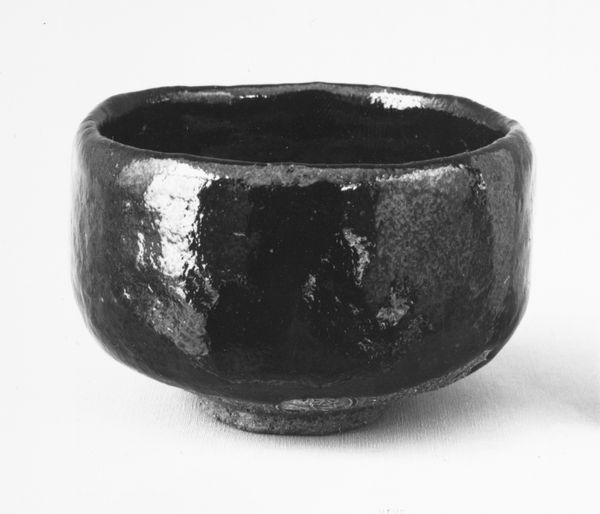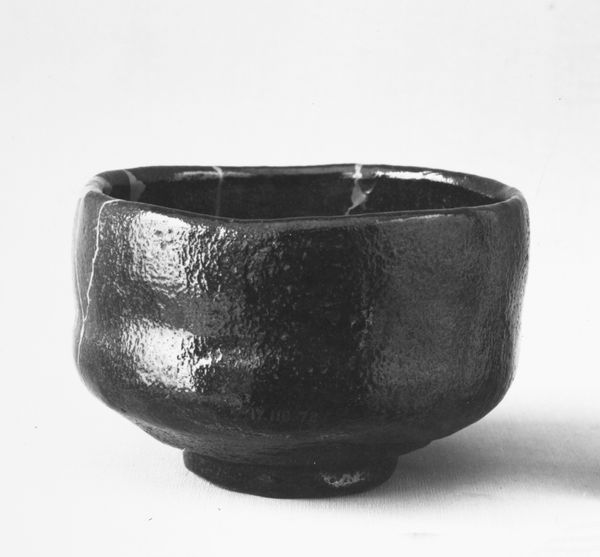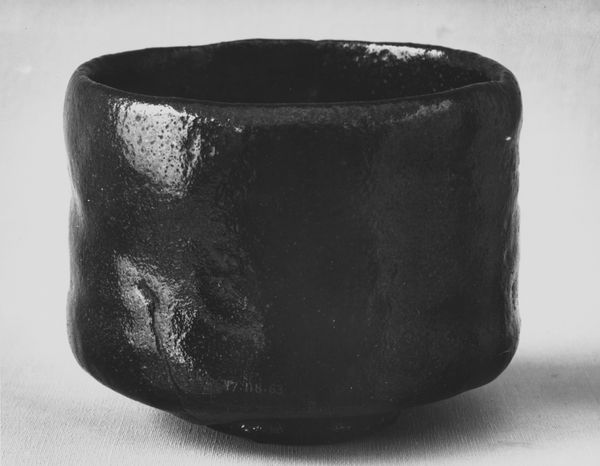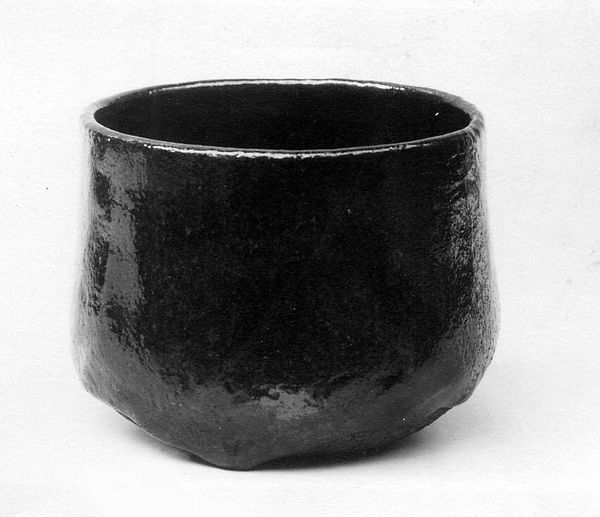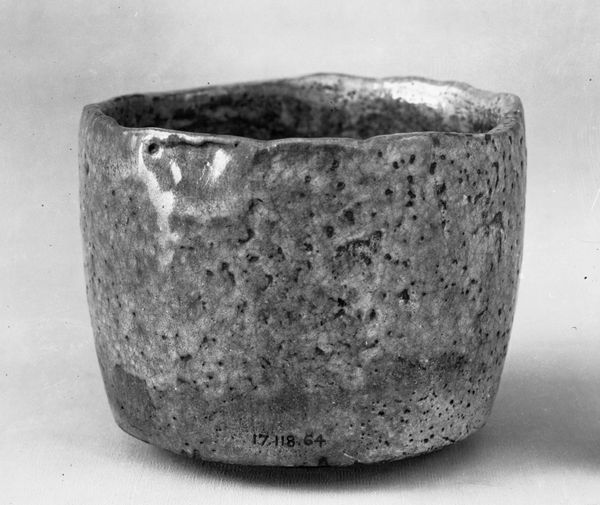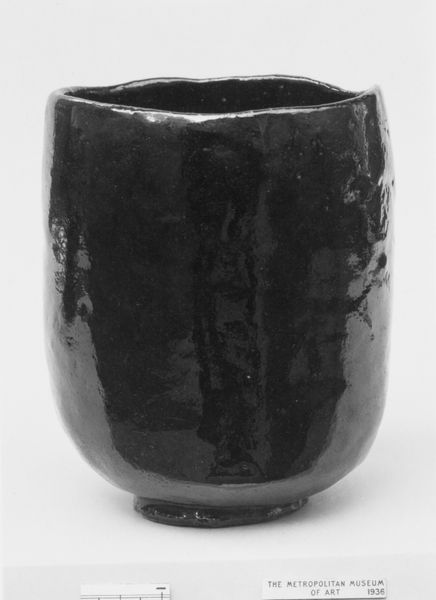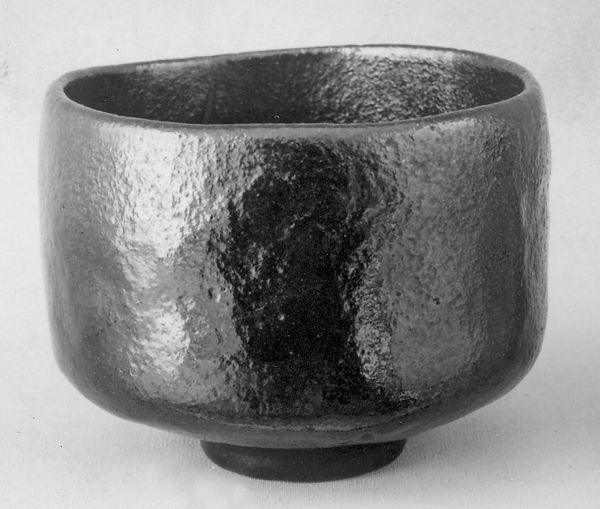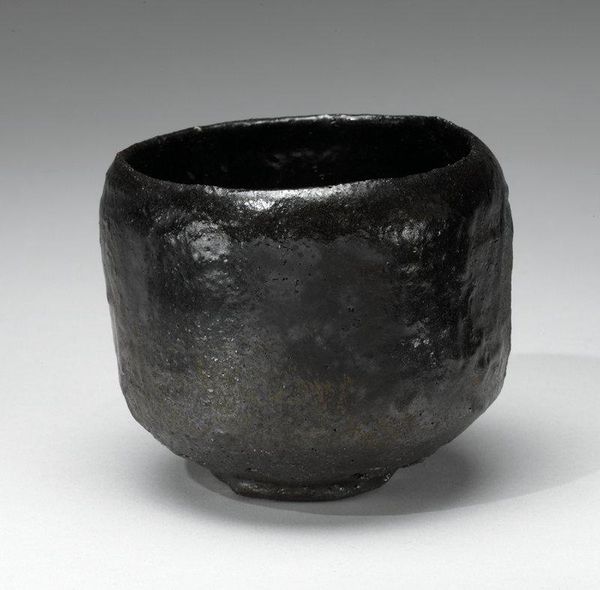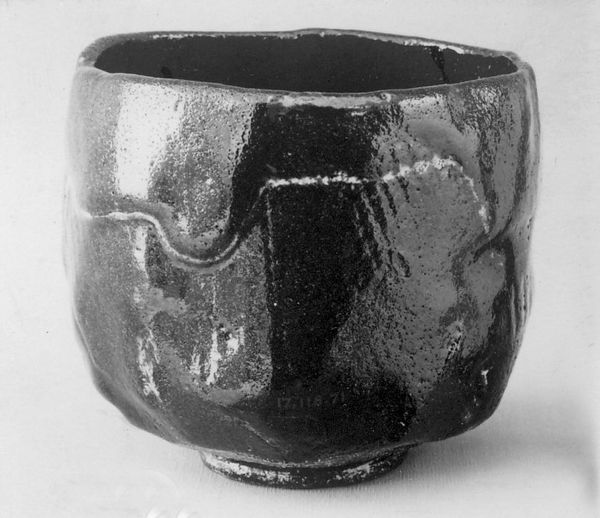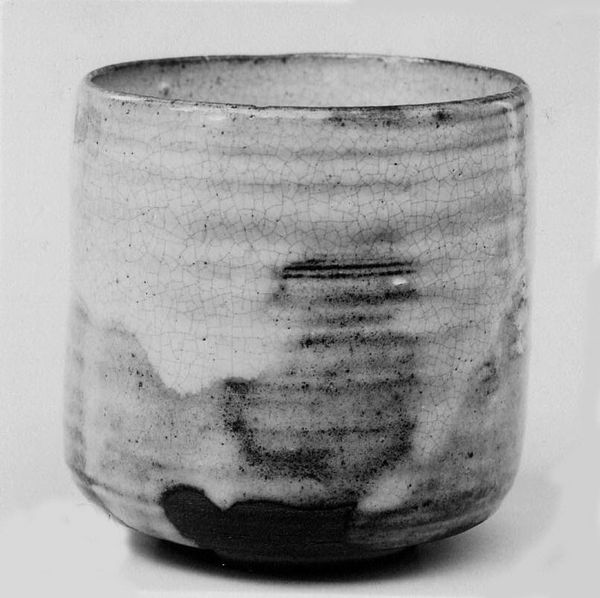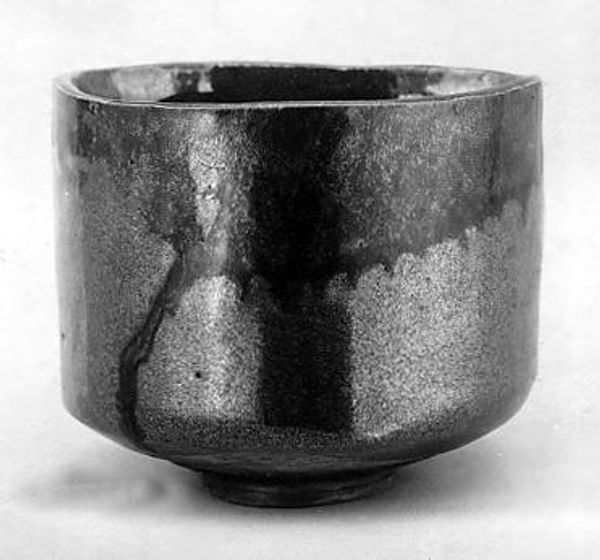
ceramic
#
medieval
#
asian-art
#
ceramic
#
japan
Dimensions: H. 3 3/4 in. (9.5 cm); Diam. 4 in. (10.2 cm)
Copyright: Public Domain
Editor: Here we have a ceramic teabowl created by Ryōnyū between 1790 and 1810, residing at the Metropolitan Museum of Art. I find the dark glaze against the simple, almost rustic form incredibly striking. What symbolic readings come to mind for you with this piece? Curator: The immediate impact comes from its darkness, doesn't it? Not just color, but a visual weight. Consider the teabowl’s role in Japanese tea ceremony, where silence and contemplation amplify small gestures. The black glaze, known as *tenmoku*, connects us to a tradition seeking profound experience through simple objects. Notice how the glaze pools and thins – what do you feel is communicated in that texture? Editor: I notice how that pooling and thinning creates an irregular surface, as if the bowl is alive, breathing somehow. Curator: Precisely. The irregularities embrace the *wabi-sabi* aesthetic – an appreciation of imperfection, impermanence, and naturalness. This philosophy, deeply rooted in Zen Buddhism, is palpable here. Think about the rituals associated with tea drinking and the emotional significance embedded in each cup. Does this bowl trigger a sense of grounding? Editor: It does. It feels deeply connected to the earth and to time, almost ancient. I'm left wondering about all the stories this vessel could hold. Curator: Yes. And think too about how the very act of holding this bowl, feeling its texture and weight, would be a deeply sensorial and, by extension, emotional experience for its user. Editor: It’s amazing how much history and emotion can be packed into such a simple form. Thank you! Curator: My pleasure. It is through such tangible artifacts that we connect with intangible heritage.
Comments
No comments
Be the first to comment and join the conversation on the ultimate creative platform.
